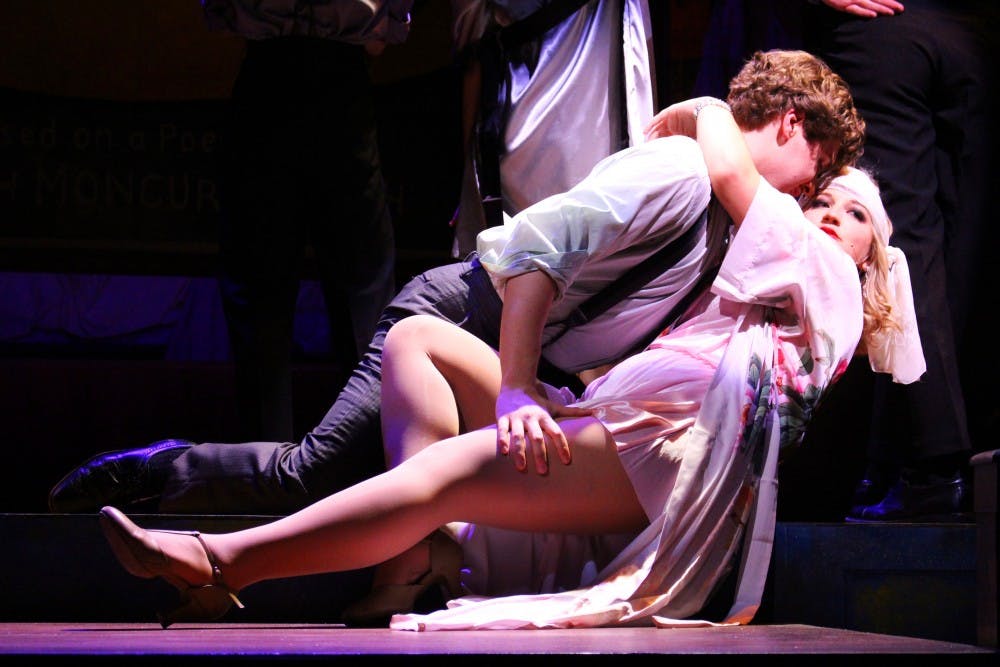For fans of rebellion, sexual liberation and general debauchery (basically the 1920s as an era), the Miami University Department of Theatre's production of "The Wild Party" is a thought-provoking feast for the senses that should not be missed.
"The Wild Party" began as a narrative poem written in 1928 by American Lost Generation writer Joseph Moncure March, but it was adapted in 2000 as a Drama Desk Award-winning, Off-Broadway musical by Andrew Lippa ("The Addams Family" and "Big Fish"). The result is assuredly a period piece that nonetheless showcases characters progressive even by 2017 standards.
The characters in "The Wild Party" can be hard to swallow at first-- to borrow F. Scott Fitzgerald's famous critique on the 1920s upper class in "The Great Gatsby," "They were careless people...they smashed up things and creatures and then retreated back into their money or their vast carelessness." Yet, the charm and charisma of the entire cast inevitably makes it hard for one not to root for these shallow, selfish partygoers.
Abby Chafe dazzles as Queenie with vocal talent that ranges from breathy Vaudeville tunes to stirringly powerful numbers. Brenton Sullivan also captivates the audience with his stellar performance as Black. Both actors possess excellent stage presence and harmonize well together, managing to stay soulful and genuine with the difficult material.
Remy Willocks (Jackie) stands out as phenomenal talent in his poignant dance solos, and Alisha Bond regularly steals scenes as Kate. The pacing of the show can be tricky, with a slow, mounting tension throughout the entire party that culminates in a truly jarring climax, but the cast navigates this well and with a palpable enthusiasum.
Designed by Miami associate professor of theatre Gion DeFrancesco, the literally electric set conveys the frenzied energy of the period. It utilizes many Vaudeville posters that ensure the audience never forgets that the world of Queenie and Burrs was one built upon and shrouded in a sense of artificiality. A number of portraits hang, positioned cunningly around the set to suggest that the love the characters show toward one another is always secondary to the narcissistic passion they have for themselves and their fame.
DeFrancesco took inspiration from the works of American painter Reginald Marsh and discussed in the show's program his desire to capture the foreboding associated with Vaudeville success, writing "the colors are vivid, gaudy like over-ripe fruit...the specter of the future surrounds this party, and makes its way into the party space itself."
The production's lighting design, created by Miami assisstant professor of theatre Marly Wooster also cultivates that sense of apprehension, adding a hyperstimulating quality that seems unreal. The lighting also draws a sharp contrast between the tones of the scenes, helping the audience to distinguish between the "shiny facade and gritty reality" of the characters and set, as Wooster put it.
If you're in the mood for a vivacious celebration and thorough examination of life in the 1920s, make sure to catch "The Wild Party" on its run at 7:30 p.m. on April 26-29 and at 2:00 p.m. on April 30th at the Gates-Abegglen Theatre.

